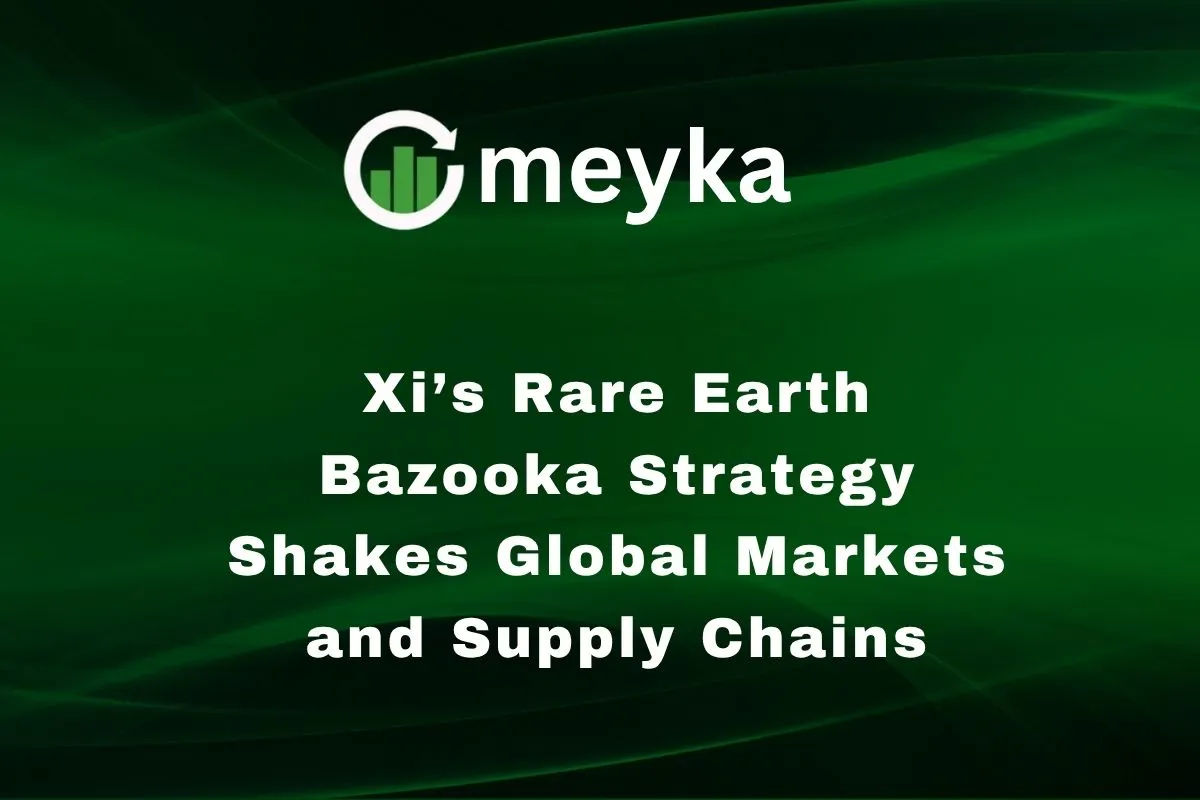Xi’s Rare Earth Bazooka Strategy Shakes Global Markets and Supply Chains
Rare earth elements (REEs) are quietly vital. They help power electric vehicles, wind turbines, advanced electronics, and defense gear. China mines about 270,000 metric tons of rare earths in 2025, roughly 70 % of global production. Now, China is pushing a bold move. President Xi Jinping has pushed what experts call a “Bazooka Strategy”, using control over rare earths as a strategic weapon. This isn’t ga radual policy change. It is sudden, heavy-handed, and disruptive.
We are already seeing shockwaves. Supply chains are under stress. Industries and governments are scrambling. This move may change how the world sources critical materials forever.
What is China’s “Bazooka Strategy”?
When we say “Bazooka Strategy,” we mean a high-impact, heavy-handed tactic used only when the stakes are high. In this case, China is wielding rare earth export control like a weapon. It’s different from normal trade tools because it aims to cause widespread disruption quickly. The idea is to force other countries to respond, and to gain bargaining leverage in global diplomacy.
China has used rare earths as a lever before, such as imposing quotas or restrictions in past trade disputes. But this new form is more aggressive and broad in its reach.
China’s Dominance in Rare Earths
China’s grip on the rare earth chain is deep. It not only mines the ores, but also dominates refining and processing. About 90 % of global processing capacity is in China.
Many critical technologies depend on rare earths:
- Electric vehicles (EVs): powerful magnets use neodymium, praseodymium
- Clean energy: wind turbines, power electronics
- Defense & aerospace: guidance systems, sensors, optics
- Electronics & semiconductors: memory chips, sensors
Because so many industries rely on these materials, China’s dominance becomes a strategic advantage.
Trigger Points: Why China Pulled the Rare Earth Lever
What pushed China to arm this Bazooka Strategy now? Several factors:
- Tech and trade tensions: The U.S. and China continue to fight over chips, semiconductors, and AI. China may see rare earths as a counterbalance.
- Strategic signaling: By acting sharply, Beijing sends a message that it won’t be backed into a corner.
- Escalation preparation: As export controls tighten, China gains leverage before new rounds of sanctions or tariffs.
In October 2025, China expanded export controls on five more rare earth metals (holmium, erbium, thulium, europium, ytterbium). These join seven earlier restricted elements.
It also placed tighter rules on technology used in refining, and required foreign firms to show how materials will be used.
Shockwaves in Global Markets
This Bazooka Strategy has already sent tremors through global markets.
- China’s rare earth exports dropped ~31% in September 2025, fueling panic among buyers.
- Stock prices in mining companies outside China surged, especially in Australia and the U.S.
- Speculators are stockpiling, pushing up futures prices for rare earth-derived components.
- Prices for magnets, specialty metals, and semiconductors are rising.
Some analysts warn that it is a blunt move that China can only use sparingly; overuse may incentivize rivals to build independent supply chains.
Supply Chain Vulnerabilities Exposed
China’s move pulls back the curtain on how fragile many supply chains are.
- Nations like the U.S., EU, Japan, South Korea, and India heavily depend on Chinese rare earths.
- When restrictions tighten, the manufacturing of EV motors, chip components, magnets, or sensors slows.
- Many companies signed long-term contracts with narrow sources. Those deals are now stressed or broken.
- Midstream processing, the refining and producing metal components, is a key choke point. Even if ores come from elsewhere, few can refine them at scale.
This reveals that access to raw ore is only part of the problem. Lack of capacity in intermediate steps makes supply chains fragile.
Global Response and Diversification Attempts
Governments and businesses are rushing to find alternatives, and fast.
- New mining projects are underway in Australia, Canada, Brazil, and Africa.
- Recycling and substitution efforts are accelerating to reuse rare materials and find alternatives.
- The U.S. Defense Department has invested in MP Materials to help rebuild refining capacity.
- The EU is seeking partnerships with the U.S. and G7 to counter China’s dominance.
- Countries are building strategic reserves and considering stockpiling critical minerals.
- Trade alliances might limit dependency on single suppliers.
Still, building new refining plants is slow, costly, and risky. Long lead times remain a big barrier.
Economic and Geopolitical Consequences
This Bazooka Strategy changes more than markets; it shifts power.
- China gains leverage in global diplomacy, especially in tech and trade deals.
- Western nations may retaliate with tariffs, sanctions, or rules restricting Chinese supply chains.
- The world could fragment into blocs: those who rely on China vs. those who invest to decouple.
- Nations may see rare earth access as part of a national security strategy, not just trade.
If China overplays its hand, it risks prompting others to build capacity that reduces China’s dominance over time.
Future Scenarios: Risk or Opportunity?
What might happen next?
- China could escalate further, cutting exports sharply if tensions worsen.
- But repeated use of this tactic may drive permanent diversification—undermining its own power.
- Some nations may succeed in building alternative supply chains, reducing risk.
- Or the world may settle into a compromise: limited trade with conditional restrictions.
We could see a bifurcated global supply, high‐cost, secure chains in the West, and cheaper, China‐dominated chains elsewhere.
Conclusion
Xi’s rare earth Bazooka Strategy is a bold escalation in global economic power games. By tightening export rules, China is asserting control over industries that define the 21st century: tech, defense, and clean energy. We are watching a moment of choice: either deeper dependence on China or a sprint toward supply chain sovereignty. The next few years will show whether this move changes global trade forever, or whether it forces China’s rivals to rewrite the rules.
Disclaimer:
This content is for informational purposes only and is not financial advice. Always conduct your research.






